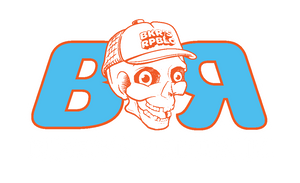
The Beginner's Bicycle Buying Guide: Cyril's Two-Wheeled Wisdom
So, you're ready to dive into the wonderful world of cycling? Congratulations! You've made the best decision since Frodo decided to drop that ring into Mount Doom. But before you charge into your local bike shop, credit card in hand, let your skeleton pal Cyril guide you through the process. Picking the right bike isn’t just about grabbing the flashiest model—it's about finding your perfect partner in pedal-powered crime.
1. Ask Yourself: What Kind of Rider Are You?
Buying a bike without knowing how you’ll use it is like grabbing a Spice Girls album when you’re really into Metallica: it just won’t hit the right notes. Here’s a quick breakdown of the main types of bikes:
-
Mountain Bikes: Perfect if you’re planning to channel your inner adrenaline junkie on trails, dirt paths, or that steep hill behind your house that’s begging to be conquered. These bikes have suspension to smooth out bumps and grippy tyres that could probably survive a trip to Jurassic Park.
-
Road Bikes: Designed for speed demons who dream of flying down asphalt at Mach 1. If you’re the type to pretend you’re in the Tour de France while cruising past your neighbour’s dog, this one’s for you.
-
Hybrid Bikes: The mullet of bicycles: business in the front, party in the back. Ideal for commuting, casual weekend rides, or avoiding that dodgy shortcut Google Maps suggested.
-
Cruisers: For the laid-back legends who believe the journey is more important than the destination. Think sunny boardwalk rides and handlebars that scream, "Let’s take it easy."
Cyril’s Tip: Not sure where to start? Imagine your ideal ride—on a scenic trail, city streets, or to the shops for a cheeky ice cream—and go from there.
2. Size Matters
Getting the wrong-sized bike is like borrowing Hulk Hogan’s wrestling boots for a jog—uncomfortable, unwieldy, and just plain wrong. Bikes come in different sizes, so it’s crucial to find the one that fits you like a pair of your favourite jeans from the early 2000s (back when everything was low-rise and questionable).
How to Check Bike Fit:
-
Stand-Over Height: When you straddle the bike, there should be about an inch of clearance between you and the top tube. Any less, and you’ll get to know the concept of "ouch" real quick.
-
Reach: You want to sit comfortably with your hands on the handlebars, not stretched out like Neo dodging bullets in The Matrix.
Cyril’s Tip: Visit a bike shop to get sized by a pro. Or, if you’re buying online, check the brand’s size chart—and don’t be shy about grabbing a tape measure.
3. Gears, Brakes, and All That Jazz
Gears:
Bikes come with everything from single speeds to a bazillion gears (okay, closer to 30). If you’re tackling hills or rough terrain, more gears are your friends. If your rides are mostly flat and straightforward, a simple setup will do.
-
Think of gears as the bike’s mixtape: sometimes you need the fast-paced beats (low gears for climbs) and other times, a steady rhythm (high gears for flats).
Brakes:
There are two main types:
-
Rim Brakes: Classic, reliable, and great for most casual riders.
-
Disc Brakes: Like the glow-up version of rim brakes, these stop you faster than you can say, "Cyril, hold my handlebars."
Cyril’s Tip: If you live somewhere rainy (looking at you, Wellington), disc brakes are worth the investment. Slippery streets and rim brakes can be sketchier than a dial-up connection in 1999.
4. Budget Like a Boss
The golden rule: Spend what you can afford, but don’t blow your life savings on the shiniest bike in the shop. A good beginner bike will set you back anywhere from $400 to $1,000. Anything cheaper might ride like a shopping trolley, and anything more expensive might have features you don’t need yet.
What You’re Paying For:
-
Frame Material: Aluminium is light and affordable. Carbon fibre? Light as a feather but priced like caviar.
-
Components: Gears, brakes, and tyres are where the magic happens. Mid-range parts are perfect for beginners—save the high-end stuff for your future Tour de You.
Cyril’s Tip: Don’t forget extras like a helmet, lights, and a sturdy lock (Cyril’s still salty about the time someone pinched his bike’s seat in 1923).
5. Test Ride Like You Mean It
Never buy a bike without taking it for a spin first. It’s the only way to know if it’s a perfect match or destined for an awkward breakup. During your test ride, ask yourself:
-
Does the bike feel comfortable?
-
Are the brakes responsive?
-
Can you picture yourself riding it without looking like a contestant on Wipeout?
Cyril’s Tip: Don’t rush this step. It’s like speed-dating for bikes—only the right one gets to come home with you.
6. Keep It Cool, Keep It Fun
Buying your first bike should be exciting, not overwhelming. Remember, it’s not just a machine—it’s your ticket to freedom, adventure, and possibly dodging morning traffic. Take your time, enjoy the process, and don’t be afraid to ask questions.
And if all else fails, just think: What would Cyril ride? Probably something fast, reliable, and ready to conquer anything—because even in death, this skeleton doesn’t do "average."
